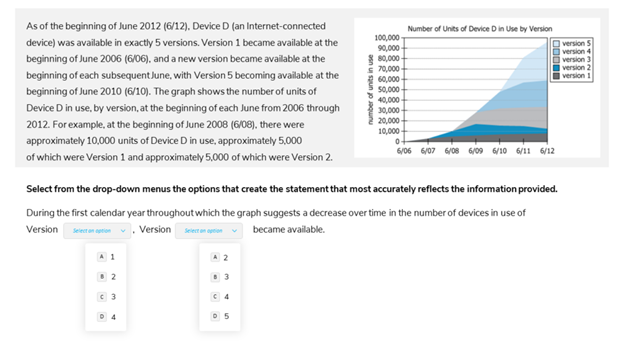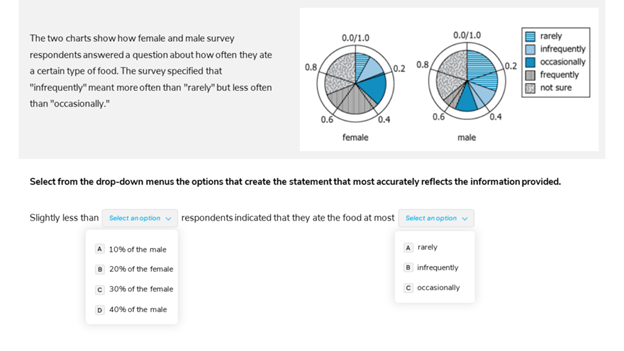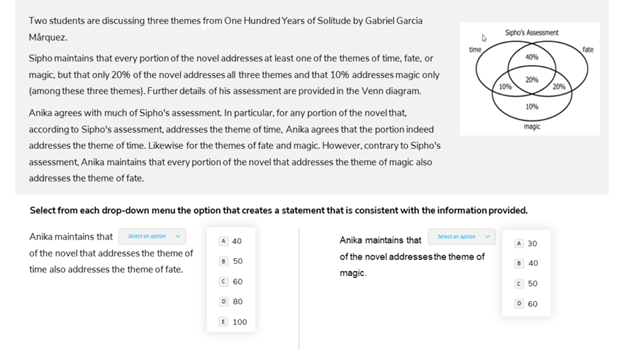Events & Promotions
|
|

GMAT Club Daily Prep
Thank you for using the timer - this advanced tool can estimate your performance and suggest more practice questions. We have subscribed you to Daily Prep Questions via email.
Customized
for You
Track
Your Progress
Practice
Pays
Not interested in getting valuable practice questions and articles delivered to your email? No problem, unsubscribe here.
- Nov 19
12:30 PM EST
-01:30 PM EST
Learn how Keshav, a Chartered Accountant, scored an impressive 705 on GMAT in just 30 days with GMATWhiz's expert guidance. In this video, he shares preparation tips and strategies that worked for him, including the mock, time management, and more - Nov 20
01:30 PM EST
-02:30 PM IST
Learn how Kamakshi achieved a GMAT 675 with an impressive 96th %ile in Data Insights. Discover the unique methods and exam strategies that helped her excel in DI along with other sections for a balanced and high score. - Nov 22
11:00 AM IST
-01:00 PM IST
Do RC/MSR passages scare you? e-GMAT is conducting a masterclass to help you learn – Learn effective reading strategies Tackle difficult RC & MSR with confidence Excel in timed test environment - Nov 23
11:00 AM IST
-01:00 PM IST
Attend this free GMAT Algebra Webinar and learn how to master the most challenging Inequalities and Absolute Value problems with ease. - Nov 24
07:00 PM PST
-08:00 PM PST
Full-length FE mock with insightful analytics, weakness diagnosis, and video explanations! - Nov 25
10:00 AM EST
-11:00 AM EST
Prefer video-based learning? The Target Test Prep OnDemand course is a one-of-a-kind video masterclass featuring 400 hours of lecture-style teaching by Scott Woodbury-Stewart, founder of Target Test Prep and one of the most accomplished GMAT instructors.
Kudos
Bookmarks
Problem Statement
Does this scenario resonate with you?
If your answer is yes, then read ahead. If your answer is no, then your accuracy in hard GI questions should be good. So for additional practice read ahead.
Navigating this article
Translation is a very critical process skill one needs to master to be able to correctly solve Data Insights questions. In this article, we have shortlisted three Official Guide HARD questions.
QUESTION 1 – “AS OF THE BEGINNING OF JUNE 2012…”.
Solve the question

Faltering Point: Did you end up selecting version 4 as the answer for blank 4? If then, then failed to translate the word “throughout” in the question statement properly.
Corrective Action: Read each word of the question statement carefully – here that word is “throughout”.
Watch the video solution.
QUESTION 2 – “TWO CHARTS SHOW HOW FEMALE AND MALE…”.
Solve the question

Faltering Point: Observe carefully that this question specifies a qualitative scale that if not translated properly can leave you confused when you see the question statement “…they ate the food at most rarely/infrequently/occasionally.”
Corrective Action: Ensure that you translate each aspect of the question dataset with the intent of “owning the dataset”.
Watch the video solution.
QUESTION 3 – “TWO STUDENTS ARE DISCUSSING THREE THEMES…”.
Solve the question

Faltering Point: In this question, failure to translate the scenario presented in the dataset about Anika’s take on the themes into the new Venn diagram for Anika will result in you remaining clueless about answering the question asked.
Corrective Action: Do not skim through the information in the dataset. Read the information with the mindset of “owning the dataset”.
Watch the video solution.
Summary
Data Insights questions demand a thorough and meticulous approach. Adopting the mindset of "owning the dataset" is crucial. Superficially skimming through the data is a common pitfall to avoid.
Consider the underlying reason such questions are integral to the GMAT: one such reason: they simulate the analytical rigor required in MBA-level case studies. Reflect on your future academic endeavors—will skimming suffice, or will a deep, comprehensive understanding be necessary to distill and analyze key insights effectively?
Does this scenario resonate with you?
- In a GI question, you read through the dataset quickly.
- You take a cursory glance at the associated graph with the intent to get the specific data from the graph once you understand what is being asked.
- You then read the question statement.
- And now you get a bit anxious since you realize that you need to read the dataset and the graph in a bit more detail to make sense of what the question statement is asking.
If your answer is yes, then read ahead. If your answer is no, then your accuracy in hard GI questions should be good. So for additional practice read ahead.
Navigating this article
Translation is a very critical process skill one needs to master to be able to correctly solve Data Insights questions. In this article, we have shortlisted three Official Guide HARD questions.
- First, solve the question on your own.
- Then read the explanation to recognize how translation plays a key role.
- Then watch the detailed video solution to cement your understanding.
QUESTION 1 – “AS OF THE BEGINNING OF JUNE 2012…”.
Solve the question

Faltering Point: Did you end up selecting version 4 as the answer for blank 4? If then, then failed to translate the word “throughout” in the question statement properly.
Corrective Action: Read each word of the question statement carefully – here that word is “throughout”.
Watch the video solution.
QUESTION 2 – “TWO CHARTS SHOW HOW FEMALE AND MALE…”.
Solve the question

Faltering Point: Observe carefully that this question specifies a qualitative scale that if not translated properly can leave you confused when you see the question statement “…they ate the food at most rarely/infrequently/occasionally.”
Corrective Action: Ensure that you translate each aspect of the question dataset with the intent of “owning the dataset”.
Watch the video solution.
QUESTION 3 – “TWO STUDENTS ARE DISCUSSING THREE THEMES…”.
Solve the question

Faltering Point: In this question, failure to translate the scenario presented in the dataset about Anika’s take on the themes into the new Venn diagram for Anika will result in you remaining clueless about answering the question asked.
Corrective Action: Do not skim through the information in the dataset. Read the information with the mindset of “owning the dataset”.
Watch the video solution.
Summary
Data Insights questions demand a thorough and meticulous approach. Adopting the mindset of "owning the dataset" is crucial. Superficially skimming through the data is a common pitfall to avoid.
Consider the underlying reason such questions are integral to the GMAT: one such reason: they simulate the analytical rigor required in MBA-level case studies. Reflect on your future academic endeavors—will skimming suffice, or will a deep, comprehensive understanding be necessary to distill and analyze key insights effectively?









